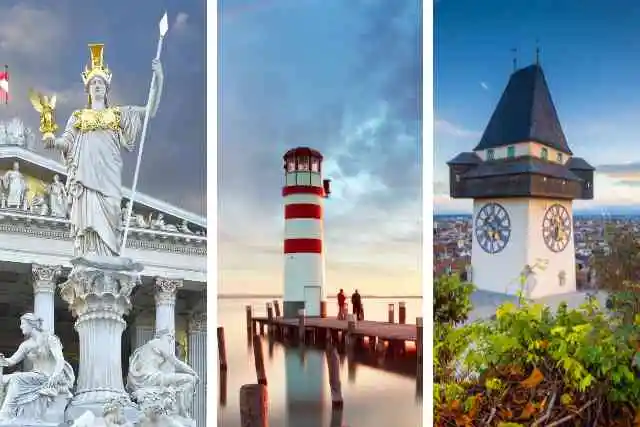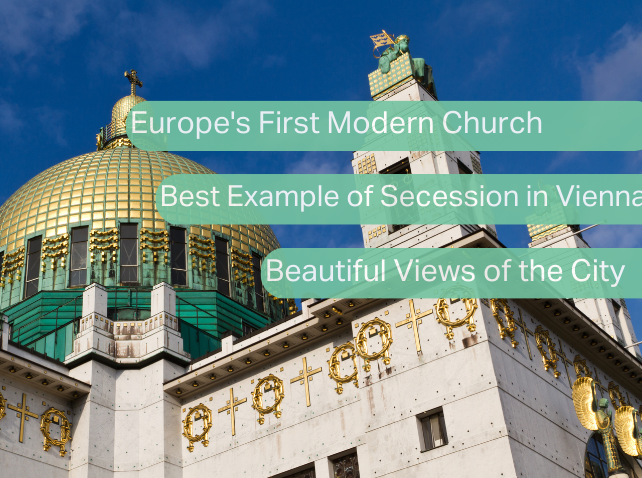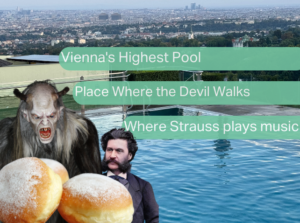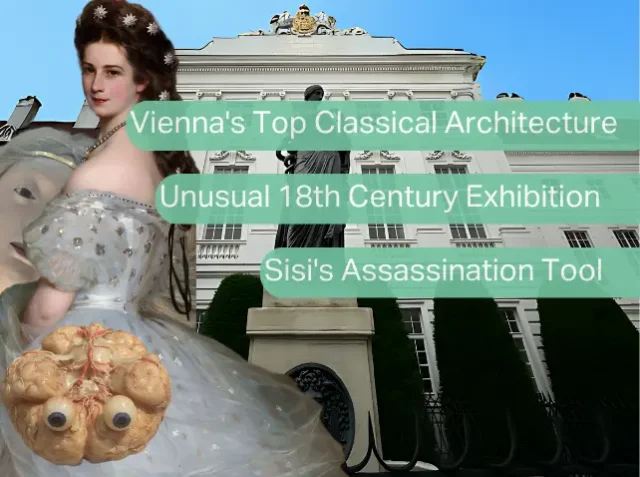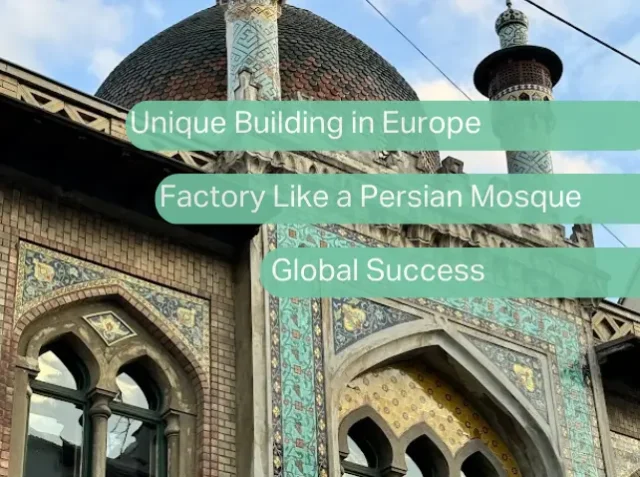Discover the fascinating secrets of Otto-Wagner-Kirche, Vienna's iconic Art Nouveau church, including its architectural innovations, controversial history, and unique features that made it the first modern church in Europe.

Book
Austria by Public Transport
Discover Austria like never before with “Austria by Public Transport.” This book is your ultimate guide to exploring the beauty of Austria easily and affordably. Get your copy today and start your adventure!
A Masterpiece of
Art Nouveau in Vienna
Otto-Wagner-Kirche, also known as Kirche am Steinhof or Kirche zum Heiligen Leopold, is a stunning example of Art Nouveau (Jugendstil) architecture in Vienna. Designed by the renowned architect Otto Wagner, the church was completed in 1907. It is part of a large hospital complex, offering a beautiful view of the city from its grounds. The surrounding green areas are perfect for walks and peaceful reflection.
The Need for a New Hospital
Complex
At the beginning of the 20th century, Vienna’s population was growing rapidly. This growth led to the need for a bigger and more modern hospital for psychiatric patients, replacing the old one in the 9th district. The new complex, often called “a city within a city” (Stadt in der Stadt), was designed to meet the challenges of the modern era.
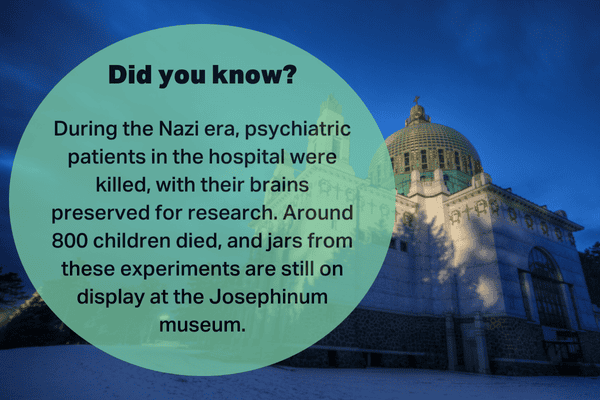
A Self-Sufficient Hospital
For safety reasons, a 4-kilometer-long wall was built around the hospital to prevent patients from escaping. The hospital grounds included over 60 buildings, such as kitchens, an administration building, social houses, and pavilions for both regular and high-paying patients. To support the hospital’s self-sufficiency, the grounds also featured farming areas, animal shelters, and religious space.

Secession
Secession was a new style that rejected historicism and aimed to create something original. It is characterized by rich ornamentation featuring plant and animal motifs, as well as depictions of women with long hair. The style favored fluid, curved lines and rounded surfaces, drawing inspiration from nature and organic forms in both facades and details.
Large windows, often with minimal divisions, were a common feature, along with meticulous attention to decorative details in door handles, balustrades, and window frames. The use of materials like glass, iron, concrete, and ceramics was innovative, and the ornamentation served to highlight both the structure and function of the building.
Secessionist architecture often displayed continuous, smooth facades without sharp edges, with entire surfaces covered in reliefs and ornamentation. Seen as a form of artistic expression, it flourished between 1890 and 1925, reaching its peak around 1905. However, after World War I, the style faced criticism and was replaced by functionalism. Secession had different regional names, such as Art Nouveau and Jugendstil, depending on the country.
Unique Design for the Church
When designing the Otto-Wagner-Kirche (Kirche am Steinhof), Otto Wagner had to consider the special needs of psychiatric patients. Beyond safety, he focused on the comfort of worshippers. The church floor was sloped to give everyone a clear view of the altar, even from the back rows. He also used materials that were easy to clean, an important feature for a hospital.
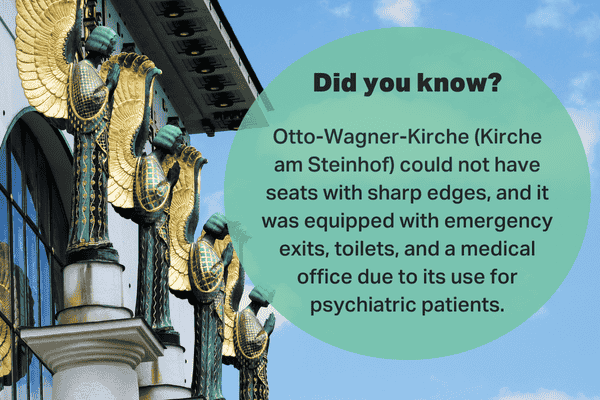
Otto Wagner
Otto Wagner was born on July 13, 1841, in Penzing, and passed away on April 11, 1918, in Vienna. He was a leading Austrian architect of the Secession movement, an urban planner, and a theorist of architecture. His most notable projects include the Vienna Stadtbahn, the Kirche am Steinhof, the Austrian Postal Savings Bank (Wiener Postsparkasse), and the Majolikahaus.
As a professor at the Academy of Fine Arts in Vienna, Wagner influenced many renowned architects. Over his career, his style evolved from historicism to Secession, eventually focusing on functionality and simplicity. He also played a crucial role in urban planning, contributing development plans for both Vienna and Budapest.
On a personal level, Wagner was married twice and had five children. He maintained a strong bond with his mother throughout his life.
Separate Entrances for
Men and Women
In line with the social norms of the time, the church had separate entrances for men and women. This design ensured that everyone followed the social conventions of the era.

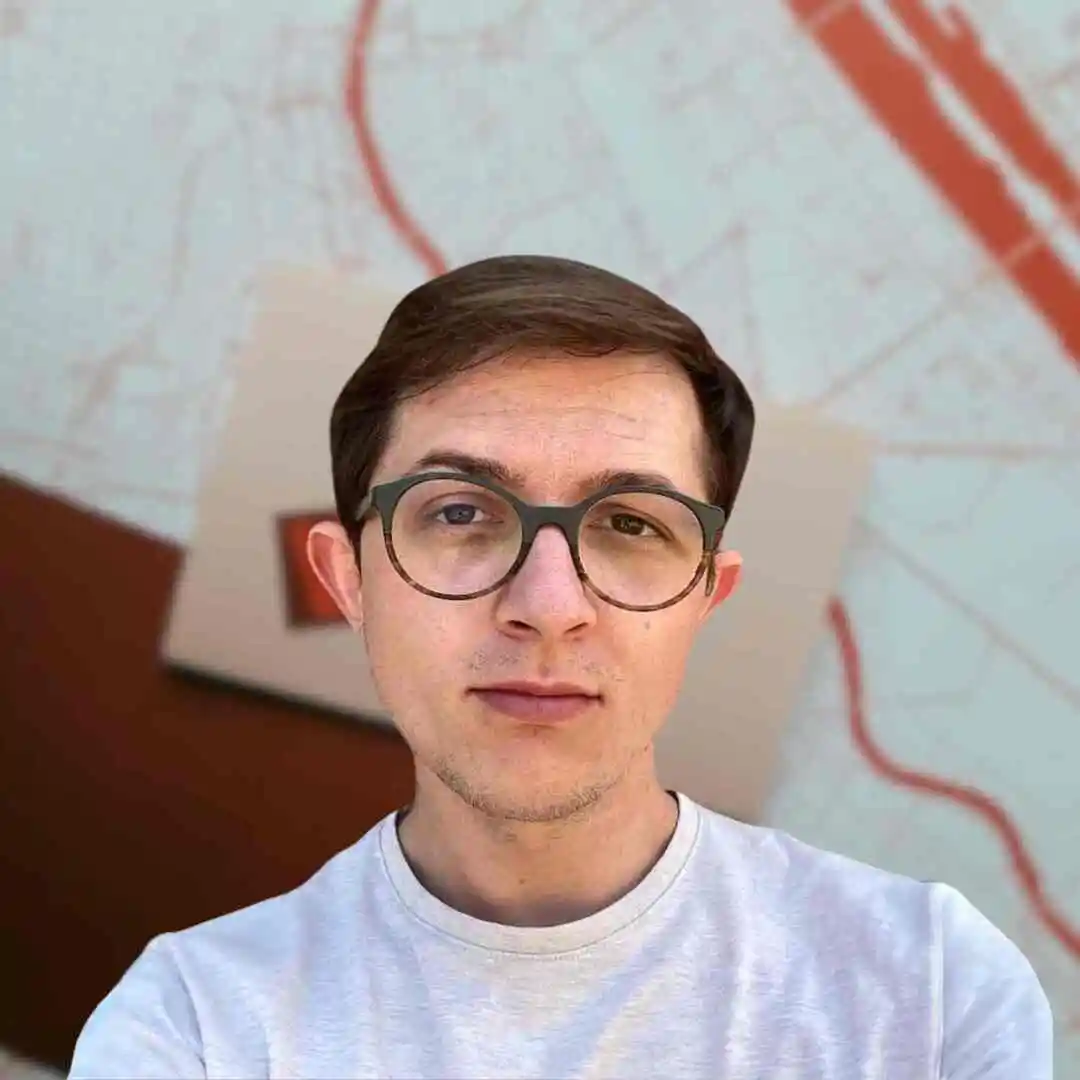
Kordian
Hey, it’s me, Kordian! I spend like 10 to 20 hours on each post just for you. This website is my main source of income. If you enjoy using it regularly, I’d totally appreciate your financial support. Your help means a lot and keeps the content coming. Thanks a bunch!
A Challenging Reception
Although the church’s bold design didn’t appeal to the royal family of Habsburgs, which may have led to fewer commissions for Wagner from the Habsburgs, the building served its purpose well. It was a vital part of the hospital community, supporting people with mental health issues. In 1920, after political and social changes, the city of Vienna took control of the complex. Unfortunately, it fell into disrepair over the following decades until its restoration began in the 1990s.
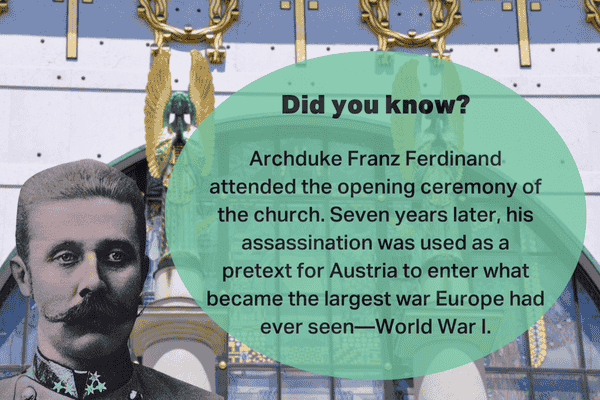
Patron of the Church
Leopold III, also known as Saint Leopold, was born in 1073 and passed away on November 15, 1136. He was a member of the Babenberg dynasty and held the title of Margrave of Austria (Marcha Orientalis) from 1095 to 1136. In 1485, he was canonized by Pope Innocent VIII.
Leopold III is the patron saint of Austria, Vienna, Lower Austria, and, together with Saint Florian, Upper Austria. He was the founder of several monasteries, including Klosterneuburg Abbey (1114), Heiligenkreuz Abbey (1133), and Kleinmariazell Abbey. In addition, he played a significant role in establishing towns along the Danube, such as Krems, Tulln, Vienna, and Hainburg.
His feast day, Leopoldi-Tag, is celebrated on November 15 with grand festivities in Klosterneuburg. Leopold is remembered as a figure who greatly influenced both the spiritual and economic development of Austria.

Subscribe
Explore Vienna like a local and discover nearby treasures.
Join our mailing list!
A Testament to History
and Architecture
Today, Otto-Wagner-Kirche (Kirche am Steinhof) stands as a valuable architectural landmark and a reminder of the history of psychiatric care at the turn of the 19th and 20th centuries. Its unique design and practical features reflect Wagner’s ability to combine beauty with functionality. The church continues to attract architecture enthusiasts and tourists eager to explore Vienna’s rich history.
More Interesting Facts
- The church at the Central Cemetery (Zentralfriedhof) in Vienna, designed by one of Otto Wagner’s students, was inspired by Otto-Wagner-Kirche.
- Otto-Wagner-Kirche is considered the first modern church in Europe.
- At the time of its opening, people believed that psychiatric patients who visited the church would become even more ill, such was the controversy surrounding Otto Wagner’s architecture.
- The remains of victims from the hospital continued to be used for research purposes until the 1980s.
Visitor Tips
- 🎟️ Free entry every first Sunday of the month.
- 💶 Normal entry fee: 5 Euros (part of the Vienna Museum branch).
- ⏰ Opening hours:
- Tuesday to Friday: 10:00–17:00
- Saturday: 14:00–17:00
- Sunday: 11:00–17:00
- 💡 When visiting the church, pay close attention to the stained glass windows, considered among the most significant Art Nouveau works in the world.
Join Our Vibrant Community
Are you passionate about discovering the hidden gems of Vienna and its surroundings? Follow us on social media and become part of our enthusiastic community!
Why Follow Us?
- Exclusive Content: Each post is a labor of love, taking between 10-30 hours to create. We share breathtaking photos, captivating stories, and invaluable tips.
- Stay Updated: Never miss out on exciting events, new attractions, and must-visit spots in and around Vienna.
- Support Independent Projects: We are an independent project, and your follows help us cover the costs of running this page. Your support is crucial!
Your Support Matters!
Every follow, like, and share directly supports our work. It helps us continue bringing you the best content and ensures we can keep this site running. By following us, you’re not just staying informed – you’re helping us grow and thrive.
Don’t miss out! Click the links above and start following us today. We can’t wait to connect with you!

